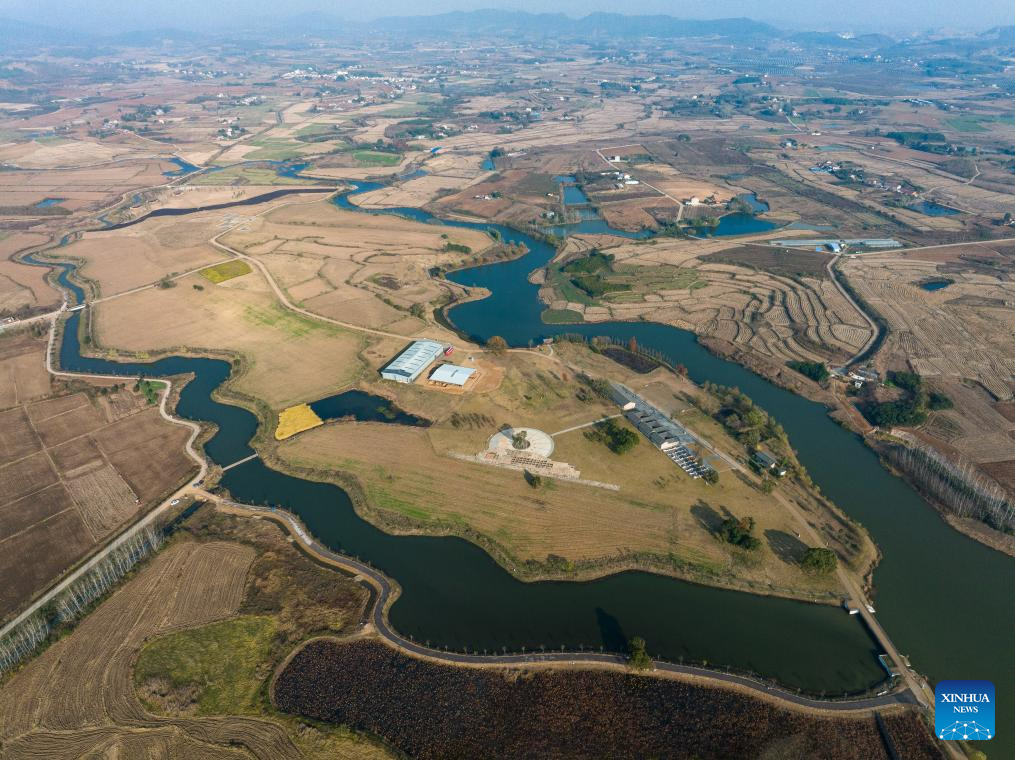
An aerial drone photo taken on Dec. 4, 2023 shows a view of the Qujialing relics site in Jingmen, central China's Hubei Province. China released a list of the top 10 archaeological findings of 2023 on March 22, with the Qujialing relics site in central China's Hubei Province listed as one of them.
The Qujialing relics site dates back between 5,900 and 4,200 years and is a major Neolithic relics site.
In recent years, farmland irrigation and water conservancy structural ruins at the Qujialing relics site have been discovered. It is believed that the structures were used to combat drought, store water, dispense water for daily use and irrigate farmlands. That would mean that prehistoric humans shifted their relationship with water resources from passive defense to proactive control and utilization. (Xinhua/Xiao Yijiu)
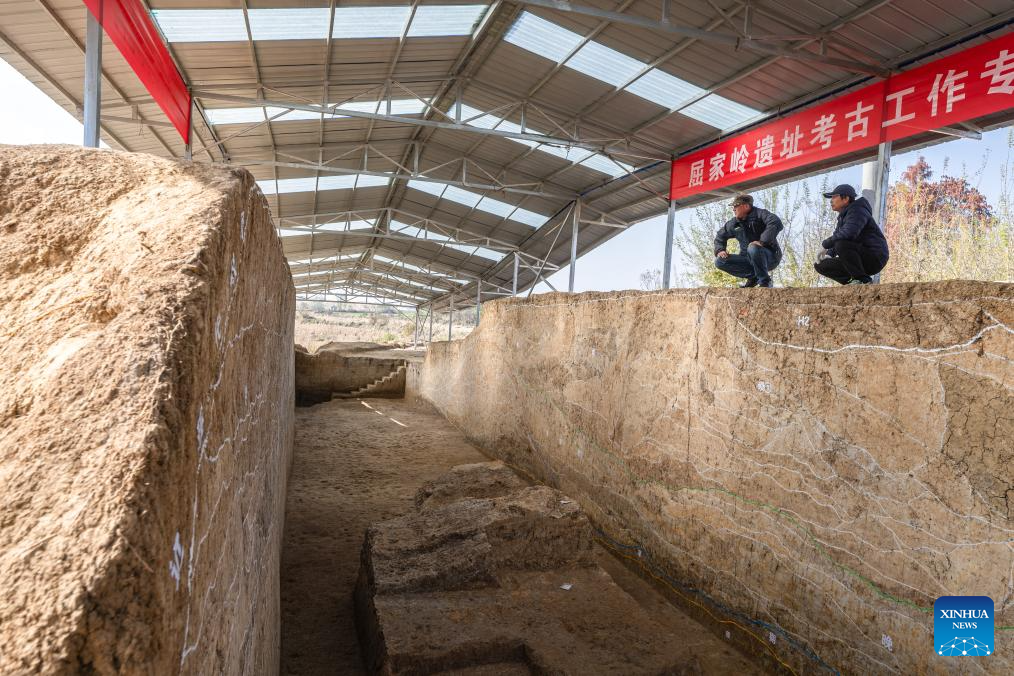
This photo taken on Dec. 4, 2023 shows archaeologists working at the relics site of the Xiongjialing Dam, part of the Qujialing relics site, in Jingmen, central China's Hubei Province. China released a list of the top 10 archaeological findings of 2023 on March 22, with the Qujialing relics site in central China's Hubei Province listed as one of them.
The Qujialing relics site dates back between 5,900 and 4,200 years and is a major Neolithic relics site.
In recent years, farmland irrigation and water conservancy structural ruins at the Qujialing relics site have been discovered. It is believed that the structures were used to combat drought, store water, dispense water for daily use and irrigate farmlands. That would mean that prehistoric humans shifted their relationship with water resources from passive defense to proactive control and utilization. (Xinhua/Xiao Yijiu)
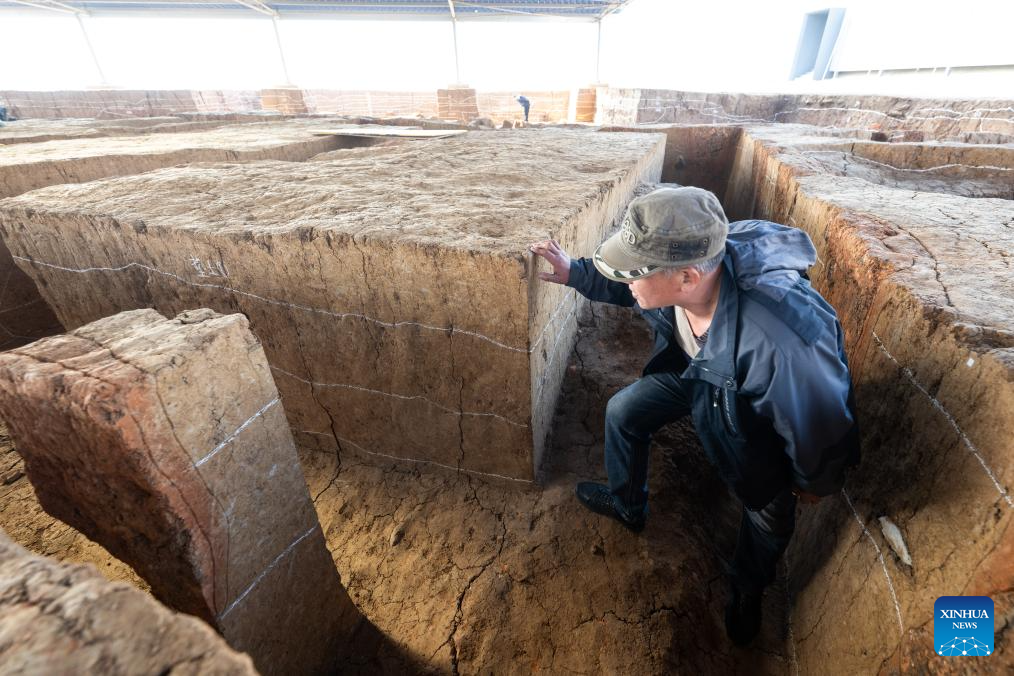
This photo taken on Dec. 4, 2023 shows an archaeologist working at the F38 relics site of the Qujialing relics site in Jingmen, central China's Hubei Province. China released a list of the top 10 archaeological findings of 2023 on March 22, with the Qujialing relics site in central China's Hubei Province listed as one of them.
The Qujialing relics site dates back between 5,900 and 4,200 years and is a major Neolithic relics site.
In recent years, farmland irrigation and water conservancy structural ruins at the Qujialing relics site have been discovered. It is believed that the structures were used to combat drought, store water, dispense water for daily use and irrigate farmlands. That would mean that prehistoric humans shifted their relationship with water resources from passive defense to proactive control and utilization. (Xinhua/Xiao Yijiu)

A drone photo taken on Dec. 4, 2023 shows archaeologists working at the relics site of the Zhengfan Dam, part of the Qujialing relics site, in Jingmen, central China's Hubei Province. China released a list of the top 10 archaeological findings of 2023 on March 22, with the Qujialing relics site in central China's Hubei Province listed as one of them.
The Qujialing relics site dates back between 5,900 and 4,200 years and is a major Neolithic relics site.
In recent years, farmland irrigation and water conservancy structural ruins at the Qujialing relics site have been discovered. It is believed that the structures were used to combat drought, store water, dispense water for daily use and irrigate farmlands. That would mean that prehistoric humans shifted their relationship with water resources from passive defense to proactive control and utilization. (Xinhua/Xiao Yijiu)
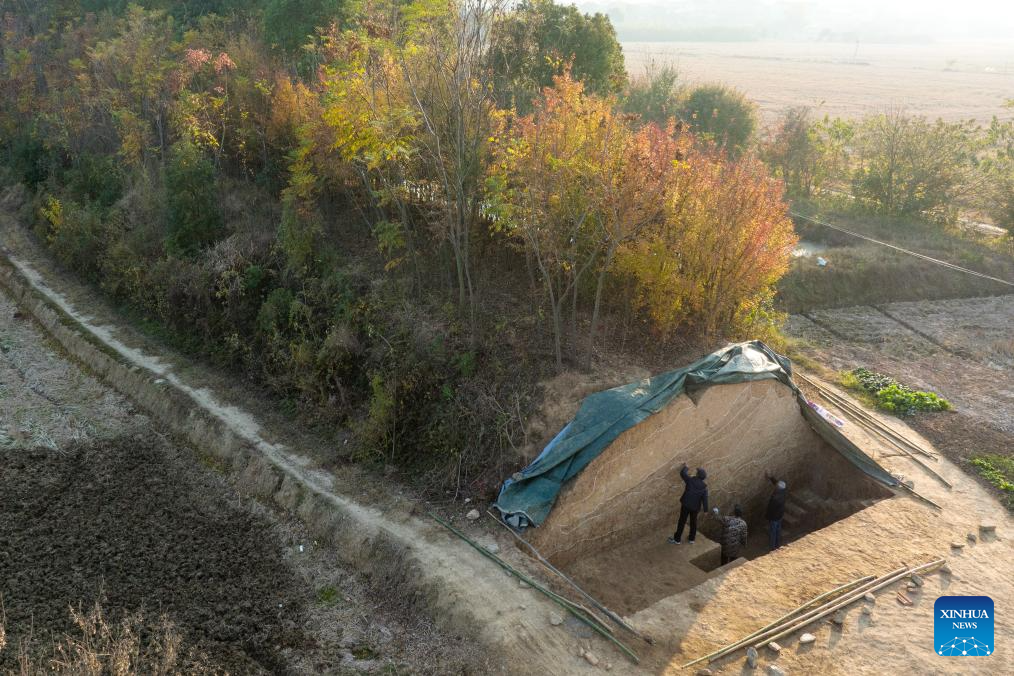
A drone photo taken on Dec. 4, 2023 shows archaeologists working at the relics site of the Zhengfan Dam, part of the Qujialing relics site, in Jingmen, central China's Hubei Province. China released a list of the top 10 archaeological findings of 2023 on March 22, with the Qujialing relics site in central China's Hubei Province listed as one of them.
The Qujialing relics site dates back between 5,900 and 4,200 years and is a major Neolithic relics site.
In recent years, farmland irrigation and water conservancy structural ruins at the Qujialing relics site have been discovered. It is believed that the structures were used to combat drought, store water, dispense water for daily use and irrigate farmlands. That would mean that prehistoric humans shifted their relationship with water resources from passive defense to proactive control and utilization. (Xinhua/Xiao Yijiu)
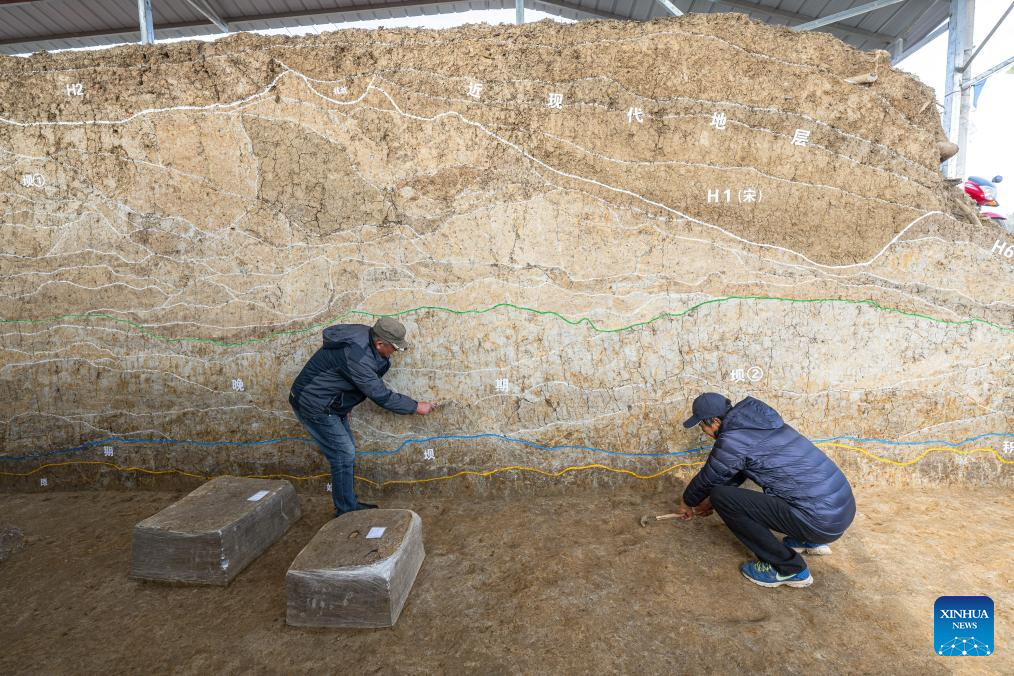
This photo taken on Dec. 4, 2023 shows archaeologists working at the relics site of the Xiongjialing Dam, part of the Qujialing relics site, in Jingmen, central China's Hubei Province. China released a list of the top 10 archaeological findings of 2023 on March 22, with the Qujialing relics site in central China's Hubei Province listed as one of them.
The Qujialing relics site dates back between 5,900 and 4,200 years and is a major Neolithic relics site.
In recent years, farmland irrigation and water conservancy structural ruins at the Qujialing relics site have been discovered. It is believed that the structures were used to combat drought, store water, dispense water for daily use and irrigate farmlands. That would mean that prehistoric humans shifted their relationship with water resources from passive defense to proactive control and utilization. (Xinhua/Xiao Yijiu)
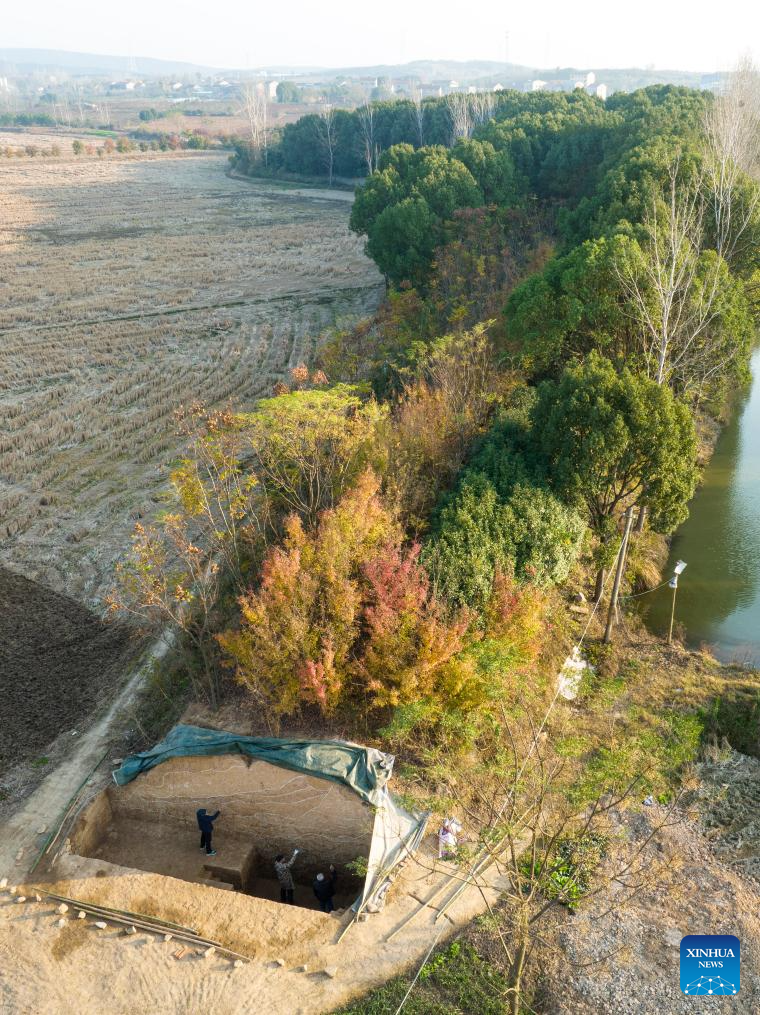
An aerial drone photo taken on Dec. 4, 2023 shows archaeologists working at the relics site of the Zhengfan Dam, part of the Qujialing relics site, in Jingmen, central China's Hubei Province. China released a list of the top 10 archaeological findings of 2023 on March 22, with the Qujialing relics site in central China's Hubei Province listed as one of them.
The Qujialing relics site dates back between 5,900 and 4,200 years and is a major Neolithic relics site.
In recent years, farmland irrigation and water conservancy structural ruins at the Qujialing relics site have been discovered. It is believed that the structures were used to combat drought, store water, dispense water for daily use and irrigate farmlands. That would mean that prehistoric humans shifted their relationship with water resources from passive defense to proactive control and utilization. (Xinhua/Xiao Yijiu)
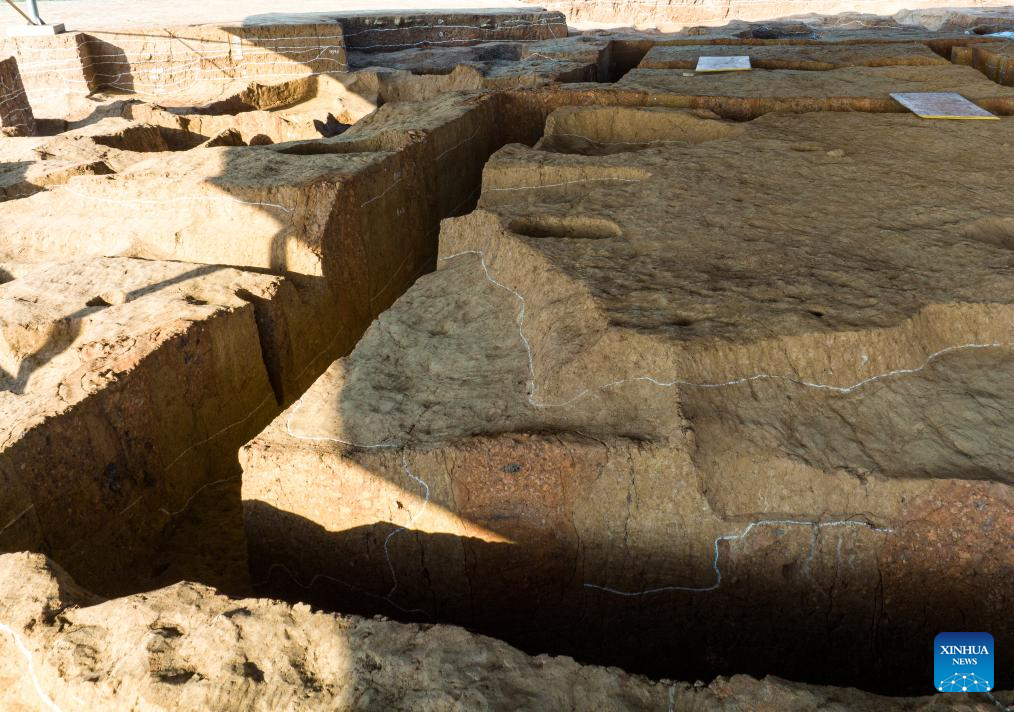
A drone photo taken on Dec. 4, 2023 shows a view of the F38 relics site of the Qujialing relics site in Jingmen, central China's Hubei Province. China released a list of the top 10 archaeological findings of 2023 on March 22, with the Qujialing relics site in central China's Hubei Province listed as one of them.
The Qujialing relics site dates back between 5,900 and 4,200 years and is a major Neolithic relics site.
In recent years, farmland irrigation and water conservancy structural ruins at the Qujialing relics site have been discovered. It is believed that the structures were used to combat drought, store water, dispense water for daily use and irrigate farmlands. That would mean that prehistoric humans shifted their relationship with water resources from passive defense to proactive control and utilization. (Xinhua/Xiao Yijiu)
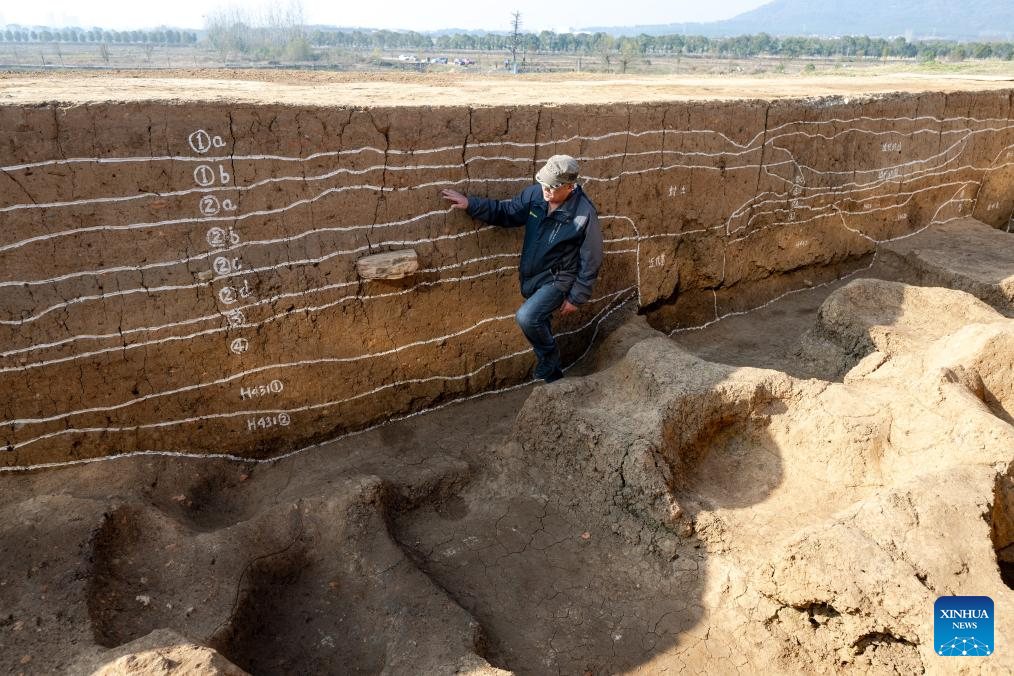
This photo taken on Dec. 4, 2023 shows an archaeologist working at the F38 relics site of the Qujialing relics site in Jingmen, central China's Hubei Province. China released a list of the top 10 archaeological findings of 2023 on March 22, with the Qujialing relics site in central China's Hubei Province listed as one of them.
The Qujialing relics site dates back between 5,900 and 4,200 years and is a major Neolithic relics site.
In recent years, farmland irrigation and water conservancy structural ruins at the Qujialing relics site have been discovered. It is believed that the structures were used to combat drought, store water, dispense water for daily use and irrigate farmlands. That would mean that prehistoric humans shifted their relationship with water resources from passive defense to proactive control and utilization. (Xinhua/Xiao Yijiu)
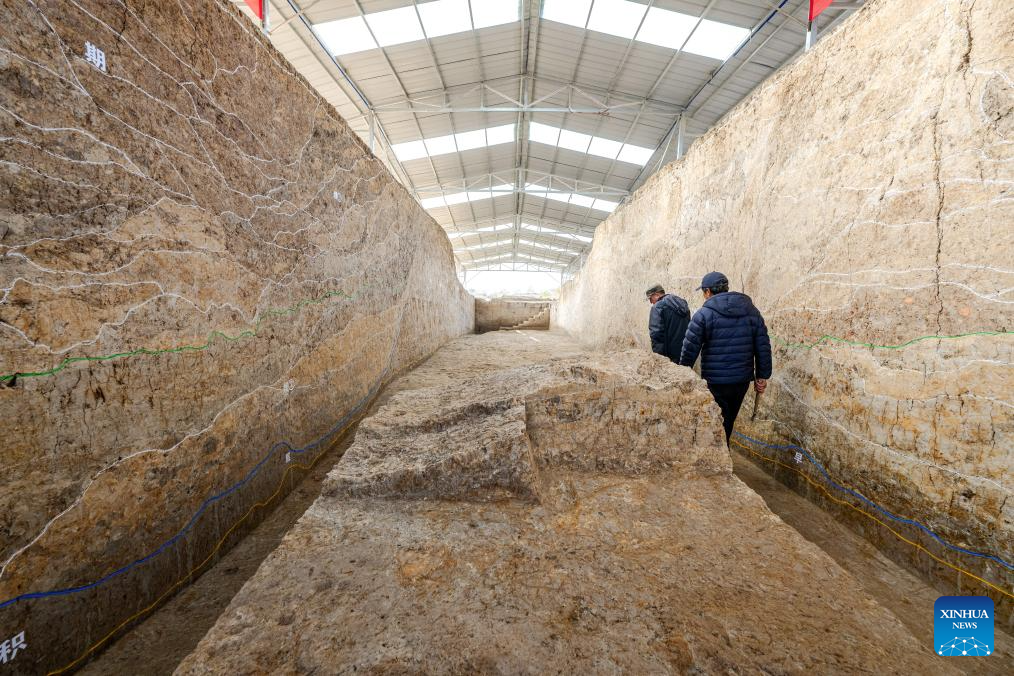
This photo taken on Dec. 4, 2023 shows archaeologists working at the relics site of the Xiongjialing Dam, part of the Qujialing relics site, in Jingmen, central China's Hubei Province. China released a list of the top 10 archaeological findings of 2023 on March 22, with the Qujialing relics site in central China's Hubei Province listed as one of them.
The Qujialing relics site dates back between 5,900 and 4,200 years and is a major Neolithic relics site.
In recent years, farmland irrigation and water conservancy structural ruins at the Qujialing relics site have been discovered. It is believed that the structures were used to combat drought, store water, dispense water for daily use and irrigate farmlands. That would mean that prehistoric humans shifted their relationship with water resources from passive defense to proactive control and utilization. (Xinhua/Xiao Yijiu)
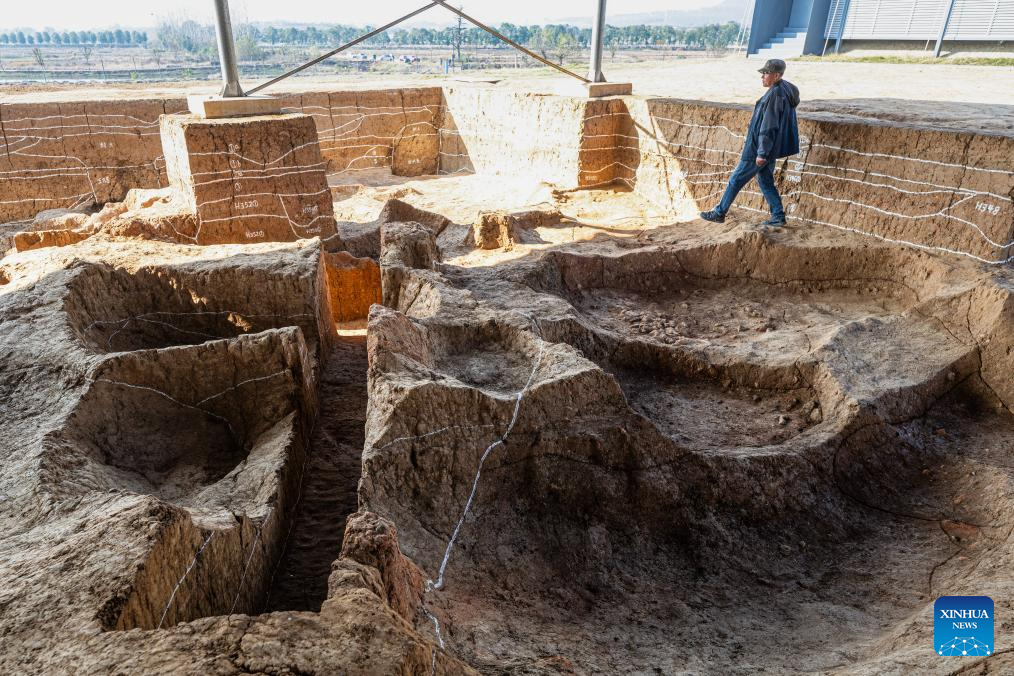
This photo taken on Dec. 4, 2023 shows an archaeologist working at the F38 relics site of the Qujialing relics site in Jingmen, central China's Hubei Province. China released a list of the top 10 archaeological findings of 2023 on March 22, with the Qujialing relics site in central China's Hubei Province listed as one of them.
The Qujialing relics site dates back between 5,900 and 4,200 years and is a major Neolithic relics site.
In recent years, farmland irrigation and water conservancy structural ruins at the Qujialing relics site have been discovered. It is believed that the structures were used to combat drought, store water, dispense water for daily use and irrigate farmlands. That would mean that prehistoric humans shifted their relationship with water resources from passive defense to proactive control and utilization. (Xinhua/Xiao Yijiu)



